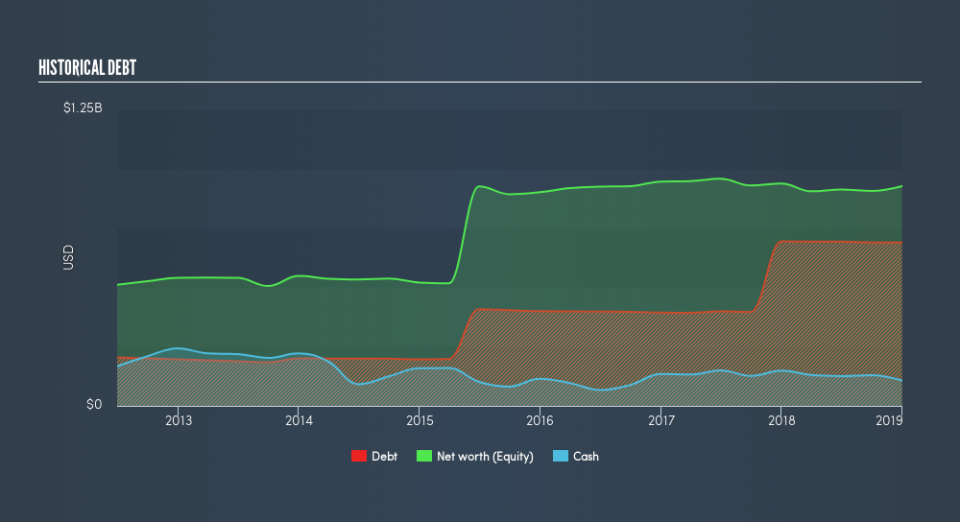Is The E.W. Scripps Company's (NASDAQ:SSP) Balance Sheet A Threat To Its Future?

Investors are always looking for growth in small-cap stocks like The E.W. Scripps Company (NASDAQ:SSP), with a market cap of US$1.8b. However, an important fact which most ignore is: how financially healthy is the business? Understanding the company's financial health becomes crucial, as mismanagement of capital can lead to bankruptcies, which occur at a higher rate for small-caps. The following basic checks can help you get a picture of the company's balance sheet strength. However, this is not a comprehensive overview, so I suggest you dig deeper yourself into SSP here.
SSP’s Debt (And Cash Flows)
Over the past year, SSP has maintained its debt levels at around US$689m – this includes long-term debt. At this current level of debt, SSP's cash and short-term investments stands at US$107m to keep the business going. Moreover, SSP has produced US$141m in operating cash flow in the last twelve months, leading to an operating cash to total debt ratio of 20%, signalling that SSP’s operating cash is sufficient to cover its debt.
Can SSP meet its short-term obligations with the cash in hand?
Looking at SSP’s US$198m in current liabilities, it seems that the business has maintained a safe level of current assets to meet its obligations, with the current ratio last standing at 2.38x. The current ratio is calculated by dividing current assets by current liabilities. Usually, for Media companies, this is a suitable ratio since there's a sufficient cash cushion without leaving too much capital idle or in low-earning investments.
Is SSP’s debt level acceptable?
SSP is a relatively highly levered company with a debt-to-equity of 74%. This is somewhat unusual for small-caps companies, since lenders are often hesitant to provide attractive interest rates to less-established businesses. We can check to see whether SSP is able to meet its debt obligations by looking at the net interest coverage ratio. A company generating earnings before interest and tax (EBIT) at least three times its net interest payments is considered financially sound. In SSP's, case, the ratio of 4.01x suggests that interest is appropriately covered, which means that lenders may be willing to lend out more funding as SSP’s high interest coverage is seen as responsible and safe practice.
Next Steps:
Although SSP’s debt level is towards the higher end of the spectrum, its cash flow coverage seems adequate to meet obligations which means its debt is being efficiently utilised. This may mean this is an optimal capital structure for the business, given that it is also meeting its short-term commitment. Keep in mind I haven't considered other factors such as how SSP has been performing in the past. I suggest you continue to research E.W. Scripps to get a better picture of the small-cap by looking at:
Future Outlook: What are well-informed industry analysts predicting for SSP’s future growth? Take a look at our free research report of analyst consensus for SSP’s outlook.
Valuation: What is SSP worth today? Is the stock undervalued, even when its growth outlook is factored into its intrinsic value? The intrinsic value infographic in our free research report helps visualize whether SSP is currently mispriced by the market.
Other High-Performing Stocks: Are there other stocks that provide better prospects with proven track records? Explore our free list of these great stocks here.
We aim to bring you long-term focused research analysis driven by fundamental data. Note that our analysis may not factor in the latest price-sensitive company announcements or qualitative material.
If you spot an error that warrants correction, please contact the editor at editorial-team@simplywallst.com. This article by Simply Wall St is general in nature. It does not constitute a recommendation to buy or sell any stock, and does not take account of your objectives, or your financial situation. Simply Wall St has no position in the stocks mentioned. Thank you for reading.

